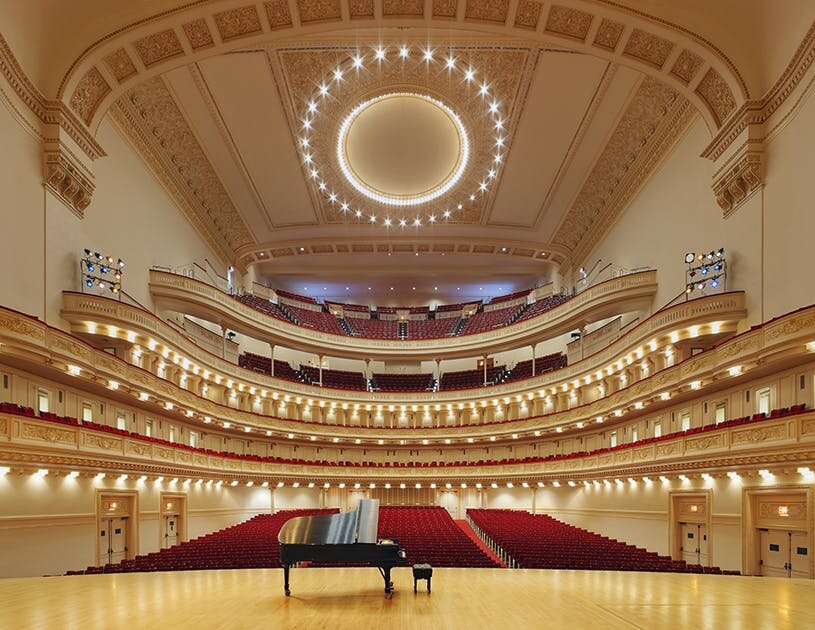Reverb: Natural Spaces—Rooms and Halls
What is reverb?
If you don’t already know what reverb is, here’s an exercise: find someplace quiet like your bathroom, office, library, church or a nearby canyon. Give your hand a strong, sharp clap with the other, and immediately bring your attention to the sound you hear AFTER the initial clap. That is reverb. Put another way, reverberation is what occurs when sound bounces off multiple surfaces at different times before reaching your ears.
The best natural reverbs are found in acoustic spaces specifically designed to produce a long decay and lush diffusion of sound such as large concert halls and old European churches. However, for the purposes of the scientific art of recording musical sound, such spaces are often impractical or impossible to access.
Nevertheless, capturing a great reverb sound is crucial to a great recording, and audio engineers since the early days of recording have found ingenious ways to emulate and/or produce natural reverb without having to leave the studio. But first, we have to talk about the two most common types of natural reverb used in music: Room and Hall.
Rooms
Rooms are rectangular spaces with 90-degree walls, floors and ceilings. You’re probably sitting in one right now and most of your favorite recordings of all time were probably recorded in one. Rooms are characterized by a fast decay time (the time it takes for the “tail” of the reverb to become inaudible). They also sound the most natural, since that’s where we spend the majority of our time. Due to their relatively small size and quick decay, room reverbs can also be the most subtle. In fact, you may not even notice it on a recording until you take it away. The recording will suddenly lose depth, air and sound like it was recorded in a coffin. Room reverbs are easy and practical to capture. They sound appropriate on nearly any source, but they are also the least interesting and aesthetic of the various reverbs. They are the vanilla of reverb.
National Southwestern recording studio in Las Vegas. Notice the acoustic panels on the ceiling and walls which help prevent sound from bouncing back and forth on the hard surfaces. Notice also the angled wall on the left which helps ensure that reflections reach the microphone(s) at different times and that no specific frequency is accentuated.
Halls
The next most common type of natural reverb is Hall. Halls are essentially very large rooms but with irregular dimensions. The ceiling, floor and walls may all angle inward towards a stage such as in a concert hall. Or, there may be multiple, curved ceilings at different levels and off-set walls of varying distances from each other such as in an old church. Concert halls often have a darker, lush sound as the higher frequencies of sound are attenuated by distance, acoustic/diffusion panels and other soft surfaces. Also, the reverb time (aka decay or “tail”) is much longer, so the reverb itself is more obvious in a pleasing way. If you were in such a space alone, not only could you literally hear a pin drop on stage, but you would hear a louder sound, such as your clap, reverberate for several seconds before fading back into silence. Halls are the chocolate of reverb: rich, sensual and decadent.
The Stern Auditorium at the world famous Carnegie Hall in New York City. Notice the curved walls, sloped seating areas and how there are separate portions of the space that become larger moving away from the stage creating a projecting effect. Not only is this space aesthetically impressive, but there are few interior spaces in the world suitable for recording with such high ceilings. Sure, some high-profile concerts will be recorded on-location, but no recording studio in the world has such large dimensions. You can see why studio engineers would wish to invent ways to achieve this effect in a more practical way.
[High frequencies don’t travel as far as low frequencies and are more easily absorbed by objects they pass through. That’s why, when you’re neighbors are having a party late at night, all you hear is the damn bass. And that’s because lower frequencies have longer wavelengths, so they are able to travel through objects like walls more easily. High frequencies are more directional than low ones, which means they travel in more of a straight line from the source whereas low frequencies emanate in all directions. That’s why sub-woofers can go on the floor behind your couch, but tweeters need to be placed at ear level or point down towards the listener.}
I know this blog was really technical, so please let me know if you found it interesting or not and if you would like me to include some audio/video examples of how these different kinds of reverbs actually sound and why they are important in recording music.
In my next blog in this series, we’ll look at the two most common types of analog reverb equipment that sound engineers developed to emulate large spaces in a fraction of the size: Plates and Springs. If you’d like to be notified when I post a new blog, sign up for my newsletter below.


